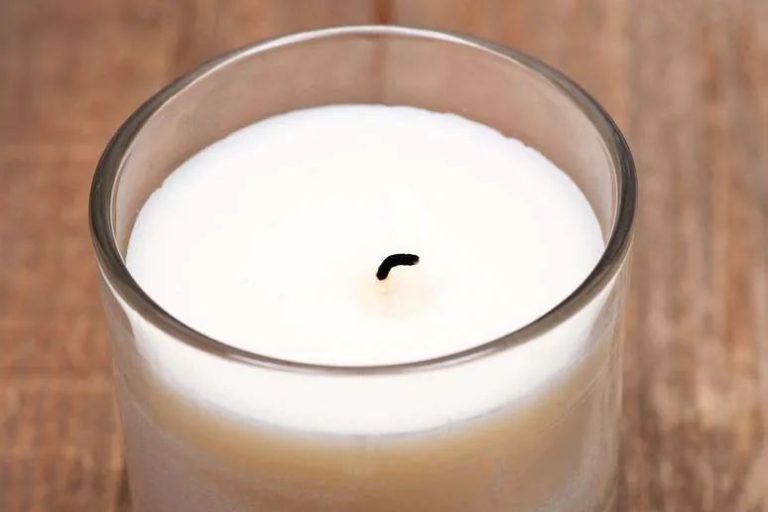Why Paraffin Wax Is Not Good?
Paraffin wax is a soft, colorless, solid substance derived from petroleum, coal or oil shale. It consists of a mixture of hydrocarbon molecules containing between twenty and forty carbon atoms. Paraffin wax has a low melting point and can convert from solid to liquid state at temperatures between 47°C and 64°C.
Paraffin wax has been used for many decades in a variety of applications including candles, wax paper, electrical insulators, and coatings. It is also commonly used in beauty treatments such as waxing and massage therapy. The soothing heat and emollient properties of paraffin wax make it an effective way to moisturize and exfoliate the skin, improve circulation, relax muscles and reduce joint pain. However, some health and environmental concerns have been raised regarding the use of paraffin wax.
Chemical Composition
Paraffin wax is a byproduct of petroleum refining. It is extracted during the refining process when crude oil is distilled into gasoline, lubricating oils and other petroleum products.1 Chemically, paraffin wax consists of saturated hydrocarbons, which are molecules composed entirely of hydrogen and carbon atoms. It has the chemical formula CnH2n+2 where n can range from 20 to 40 carbon atoms.2
The hydrocarbons in paraffin wax typically contain between 20 and 40 carbon atoms per molecule, making them longer chain hydrocarbons. This gives paraffin wax a waxy consistency and high melting point. The specific melting point depends on the hydrocarbon chain lengths, but is generally between 47°C and 64°C.
Health Concerns
One of the biggest concerns around paraffin wax is that it may contain carcinogenic compounds. When burned, paraffin wax candles release compounds like toluene and benzene, which are known carcinogens according to the EPA and the National Toxicology Program.
Specifically, studies have shown paraffin wax can contain compounds like:[1]
- Toluene – Linked to birth defects and organ damage
- Benzene – A known human carcinogen
- Acetaldehyde – Suspected carcinogen
- Formaldehyde – Known human carcinogen
Exposure to the soot and fumes from paraffin wax candles needs to be limited. Make sure to keep rooms properly ventilated and ensure your paraffin candle has a proper wick to limit soot and smoke.
Environmental Impact
Paraffin wax production has significant negative environmental impacts.

The process of extracting and refining crude oil to make paraffin wax releases toxic pollutants like sulfur dioxide, carbon dioxide, and particulate matter into the atmosphere. These emissions contribute to acid rain, ozone layer depletion, and climate change (https://www.frontiersin.org/articles/10.3389/fmars.2018.00094).
Paraffin wax production also generates a tremendous amount of waste. The sludge byproduct contains carcinogenic PAHs (polycyclic aromatic hydrocarbons) which can leach into groundwater and soil, causing contamination. Improper disposal of this toxic sludge poses major environmental hazards (https://essentials.banyantree.com/blogs/blog/no-love-for-paraffin-wax).
Furthermore, paraffin wax is derived from non-renewable petroleum sources. Its continued large-scale use diminishes limited fossil fuel reserves and is ultimately unsustainable in the long run.
Due to all these concerns, eco-conscious consumers are shifting away from paraffin wax towards more sustainable plant-based or beeswax alternatives that have less environmental impact.
Sustainability
Paraffin wax is derived from petroleum, crude oil, coal, or shale oil, which are all non-renewable fossil fuels. The production of paraffin wax relies heavily on these finite resources that cannot be replenished at a sustainable rate (Jungle Culture). Because paraffin wax is a byproduct of crude oil refinement for gasoline, its continued production depends on environmentally harmful oil drilling. As a non-renewable resource that is tied to fossil fuel extraction, paraffin wax cannot be considered sustainable. In contrast, sustainable waxes like soy, beeswax, and coconut wax come from renewable sources that don’t deplete finite natural reserves.
Allergies
Paraffin wax can cause allergic reactions in some people.
According to Mount Sinai, paraffin contains petroleum products that can trigger allergic reactions in sensitive individuals. If the paraffin contains a dye, a person with an allergy to that dye may experience swelling of the tongue and throat, wheezing, and trouble breathing (https://www.mountsinai.org/health-library/poison/paraffin-poisoning).
Healthline states that those with chemical sensitivities may develop minor swelling or breakouts from paraffin wax treatments, as paraffin comes from petroleum products (https://www.healthline.com/health/paraffin-wax).
According to Happy Wax, the industrial chemicals used to process paraffin wax can trigger allergic reactions in some people, especially those with sensitivities (https://happywax.com/blogs/from-the-blog/7-health-issues-caused-by-paraffin-wax).
Quality
Paraffin wax has a reputation for being poor quality compared to natural waxes like beeswax or soy wax. One of the main issues with paraffin is its poor thermal conductivity. This means paraffin does not transmit heat as efficiently as other waxes. As a result, paraffin candles tend to have weak flames and produce smoke and soot as the wax pools. Natural waxes like beeswax have higher melting points and better thermal conductivity, resulting in brighter, cleaner burning candles.
According to BeeHiveCandles.com, “Since paraffin wax has a lower melting point, it has a weaker, less brilliant flame than a beeswax candle.” The poor thermal properties of paraffin lead to subpar performance compared to beeswax or soy candles.
Alternatives
There are some excellent natural wax alternatives to paraffin wax that are becoming increasingly popular. Two of the most common alternatives are soy wax and beeswax.
Soy wax is made from hydrogenated soybean oil. It is a renewable and biodegradable resource that burns cleanly (source: https://helmlondon.com/en-us/blogs/blog/the-natural-alternative-to-paraffin-wax-what-really-is-soy-wax). Soy wax candles have a lower melting point than paraffin, so they burn cooler and don’t release potentially harmful fumes. Soy wax is also less brittle than paraffin.
Beeswax is another excellent natural alternative to paraffin wax. Beeswax is made from honeycomb produced by honey bees. It is a renewable resource that burns cleanly and has a lovely natural honey aroma. Beeswax candles have a high melting point so they burn longer than paraffin. Beeswax is also biodegradable and non-toxic (source: https://www.amazon.com/Eco-Fin-Reverie-Paraffin-Alternative-Pc/dp/B07GVS2RT3).
Recommendations
Based on the health and environmental concerns around paraffin wax, it’s best to use natural, eco-friendly candle wax alternatives. Some great options include:
Coconut wax – Made from coconuts, this sustainable and renewable wax has a clean burn and great scent throw.
Beeswax – A classic choice, beeswax is all-natural and non-toxic. It has a lovely honey aroma and naturally appealing glow.
Soy wax – Derived from soybeans, soy wax is biodegradable and renewable. It’s easy to work with and blends well with essential oils.
Palm wax – Sourced from palm trees, palm wax is an eco-friendly option that’s vegan, natural, and fast-burning.
Many candle makers are transitioning to these more sustainable waxes. For health, environmental, and ethical reasons, it’s best for consumers to also choose natural wax candles over paraffin.
Conclusion
In summary, paraffin wax raises several concerns that make it a poor choice compared to natural wax alternatives. Paraffin is derived from petroleum, so it is neither sustainable nor environmentally-friendly. The refining process requires extensive energy and chemical use. When burned, paraffin releases toxins and carcinogens into the air. For health, paraffin wax can trigger allergies and contains compounds that may disrupt hormones. The quality is also inferior to beeswax and soy wax, which are softer, more supple, and naturally moisturizing. With the availability of high-quality natural waxes, there is no need to use paraffin anymore. The negatives clearly outweigh any minor benefits. For these reasons, it’s best to avoid paraffin wax and switch to more ecological and health-conscious alternatives instead.




